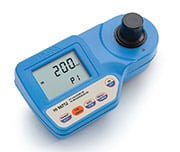
Aquariums must maintain a homeostatic ecosystem for residing organisms to thrive. Multiple factors can influence the health, growth, lifespan, and breeding potential of aquatic creatures. Parameters such as temperature, oxygen, water level, salinity, and nutrient levels all contribute to the health of the organisms in the tank.
While all aquatic creatures require balanced ecosystems, some are more sensitive to changes within their tanks. Freshwater snails can be very susceptible to environmental changes; this is especially so if they are in an active breeding cycle, active growth phase, or if there was an injury to their shell. One key water quality parameter for freshwater snails is calcium. Calcium is an essential nutrient for the function and growth of most organisms on the planet, promoting bone strength and healthy egg formation. Calcium similarly encourages the growth, strengthening, and healing of shells in aquatic creatures such as freshwater snails.
Healthy electrolyte and calcium levels are more difficult to maintain in freshwater tanks than saltwater tanks due to the composition of the water. Saltwater tanks are inherently rich in salts and minerals. Freshwater tanks are started with tap water from a sink, or reverse osmosis water with added nutrients. Freshwater snails get adequate calcium from the water in their tank as long as the source water has sufficient calcium hardness (70-90 mg/L calcium), the tank is not overcrowded, and 25% of the water is refreshed every two weeks.
If the source water does not have sufficient hardness or if the calcium is being quickly depleted, calcium must be added. Preferred methods of calcium additives are ground coral, liquid additives, cuttlebones, and eggshells. Owners must be thoughtful in their calcium additions however; if the calcium concentration in the aquarium is too high, then scaling can occur, increasing the frequency at which the filters must be cleaned.
An owner of an aquarium emporium contacted Hanna Instruments for assistance in monitoring the nutrient levels of their freshwater breeding tanks. They had a test kit that provided a color change when testing the aquarium water; but despite good test results, their tanks still seemed to be off-balance. The snails appeared to be lethargic with slow growth rates and significantly hindered reproduction rates. This evidence of poor snail health troubled them not only because of their retail value, but also the snails’ use in cleaning the freshwater fish tanks. Based on the symptoms, the emporium suspected that the tanks were deficient in calcium. The customer detailed that it was difficult to determine nutrient levels when using the test kit due to subjective and subtle color changes.

Hanna Instruments recommended the Calcium and Magnesium Photometer - HI97752. Due to the small profile of the device, it would be easy to walk the emporium floor to test multiple tanks with ease. The premade reagents offered consistency and convenience while the optical system on the HI97752 provided an extremely accurate result when compared to a visual test kit result.
The resolution of calcium is accurate to 1 mg/L with a range of 0 to 400 mg/L, bracketing their ideal range of 70 to 90 mg/L. This relieved the customer’s worries that the readings for their tanks could still potentially be off. It was recommended that they use gloves while handling the cuvettes, as well as a microfiber cloth to wipe the cuvettes before measurement to prevent interference from particulates on the glass.
The customer appreciated the CAL Check™ feature and standards to ensure that the photometer was performing correctly. Due to the convenience and affordable nature, they thought that having an HI97752 at each storefront would be beneficial. The HI97752 provided a complete solution for their calcium measurement needs.
That's why we've dedicated our blog as a helpful resource for you to use! Catch up on the latest products, explore industry trends, discover testing tips, learn how to improve results, and more. Got questions? Email sales@hannainst.com.
